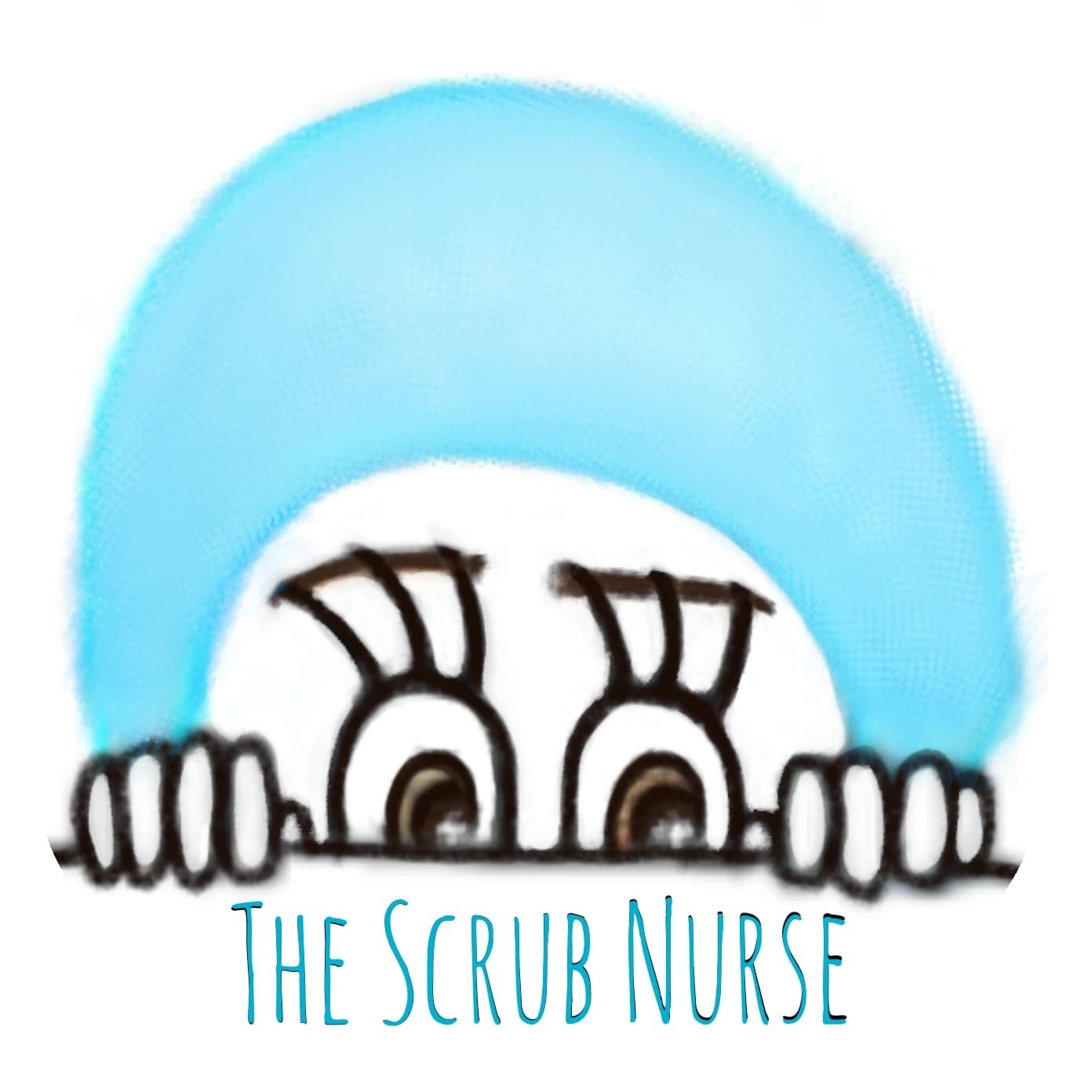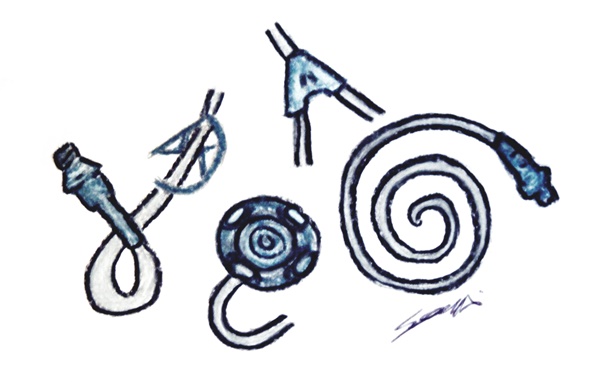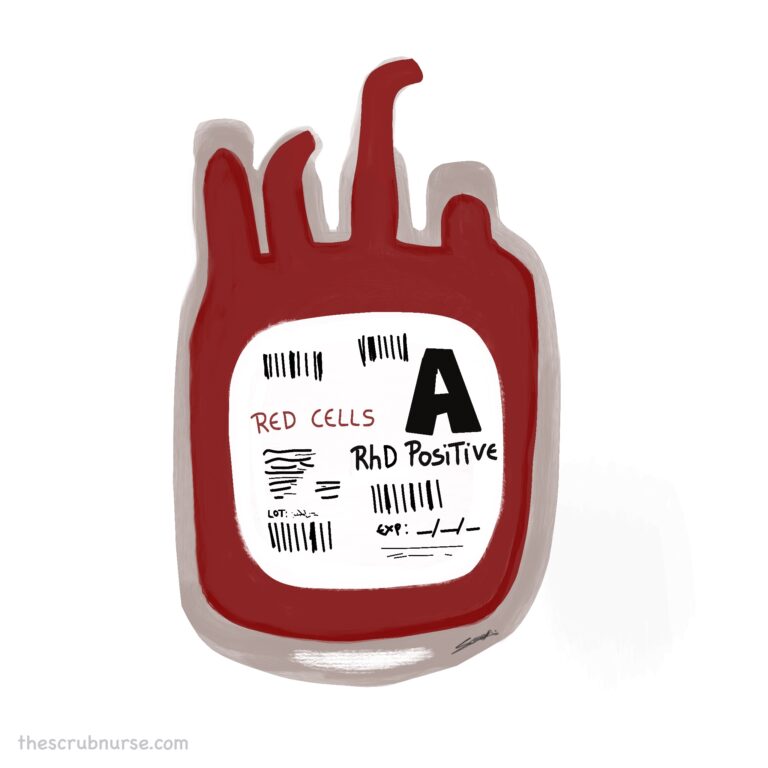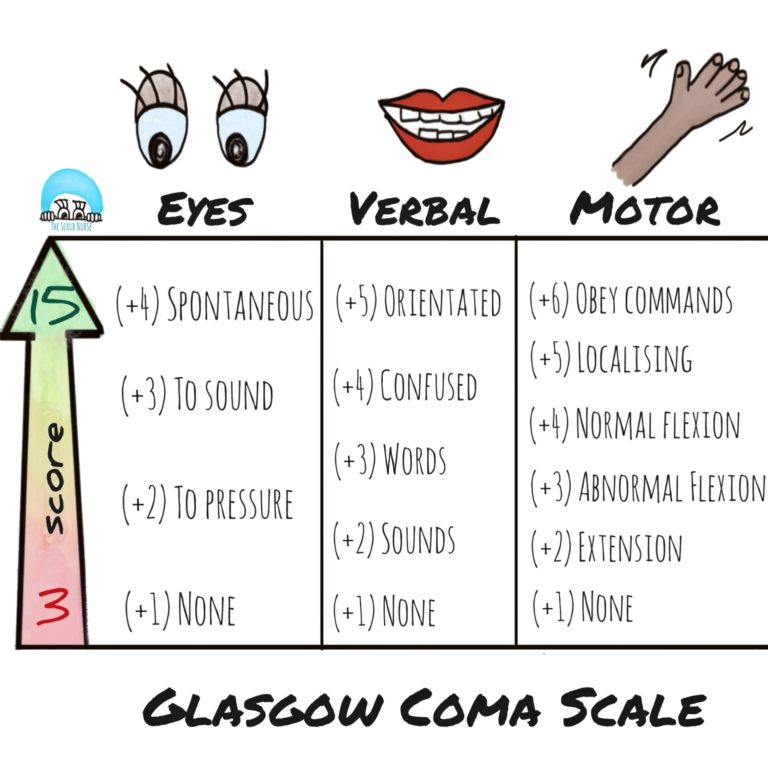Extravasation and Infiltration are complications that occur when a drug or fluid is administered through a venous access and it is leaking out of the vein into the surrounding tissues. These complications can occur during any intravenous therapy, via either peripheral or central venous access.
The type of solution that is administered and leaks out is what determines if it is an extravasation or an infiltration.
- Extravasation – is the leakage of a vesicant medication or solution into the surrounding tissues.
- Infiltration – is the leakage of a non-vesicant medication or solution into the surrounding tissues.
Let’s understand which drugs are considered vesicant and which ones are not.
How much damage can the drug do?
- Vesicant drugs are those with potential to cause serious tissue damage, including blistering, ulceration and tissue death. In addition to the chemotherapy drugs (cytotoxic agents), there are also non-cytotoxic drugs that cause extravasation injuries (see the table below).
- Non-Vesicant drugs are those that do not cause tissue death, and whose symptoms and signs in the affected area are typically less severe.
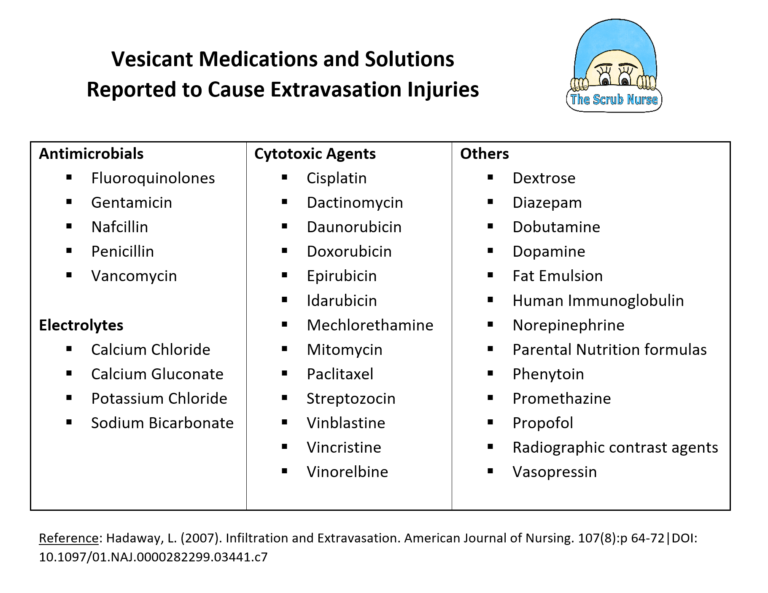
The Signs and Symptoms to look for
When receiving an IV therapy, patients must be educated of which symptoms to look out and to report them immediately to the healthcare professional.
Extravasation and Infiltration share common signs and symptoms, but there are additional complications that are more serious and exclusive to an extravasation scenario (see table below).
The first symptom of possible infiltration or extravasation is pain and discomfort at the site of cannulation.
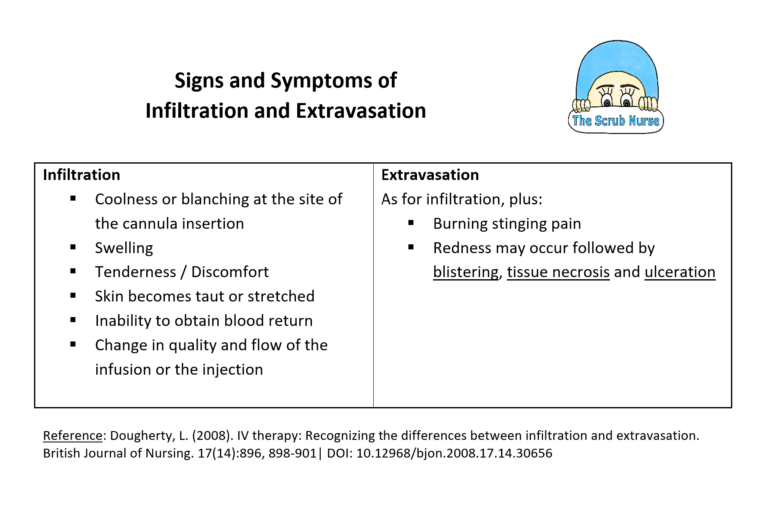
What may be the cause of an extravasation or Infiltration?
There are various situations that can contribute to these complications. They are:
- Patients with fragile veins or poor venous access, and therefore they may be unable to tolerate the volume, pressure or irritant nature of the drugs;
- Poor cannulation practice;
- Incorrect method of administration of fluids;
- Lack of monitoring of the infusion;
- Patient and/or healthcare professional uncapable to recognise the signs and symptoms of infiltration or extravasation.
Summary Illustration
To help you remember which drug is related to which complication, just check their names! Extravasation has the “v”, so it goes with “vesicant drug”. Infiltration does not have the letter “v”, instead has the “n”, so it goes with “non-vesicant drug”.
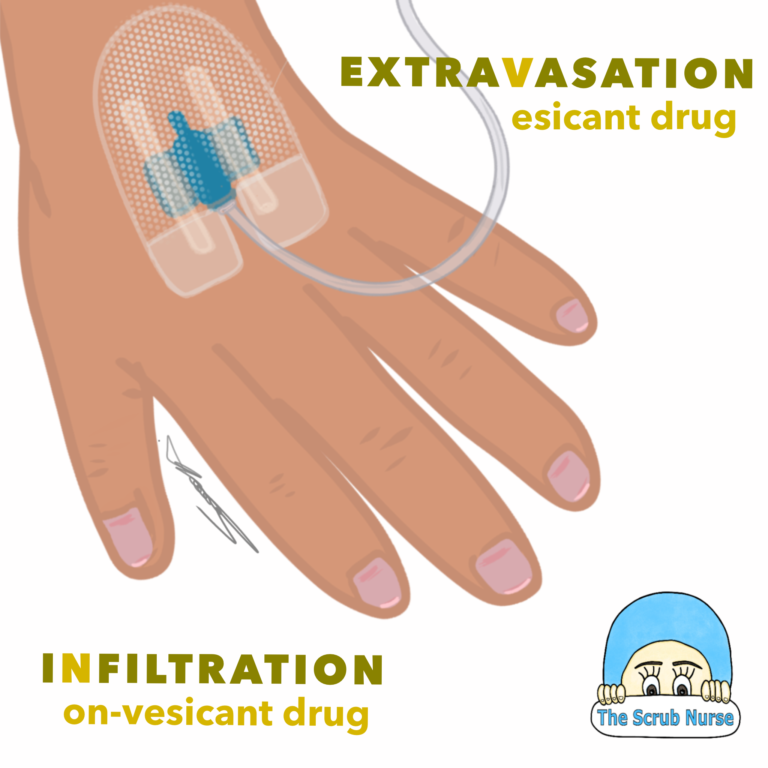
References
- Extravasation: Definition, symptoms, and treatment (medicalnewstoday.com)
- IV therapy: recognizing the differences between infiltration and extravasation – PubMed (nih.gov)
- Medications with Irritant or Vesicant Properties.pdf (mi-hms.org)
- (PDF) Infiltration and extravasation – Preventing a complication of IV catheterization (vol 107, pg 64, 2007) (researchgate.net)
- Soft-tissue disorders | Treatment summaries | BNF | NICE
